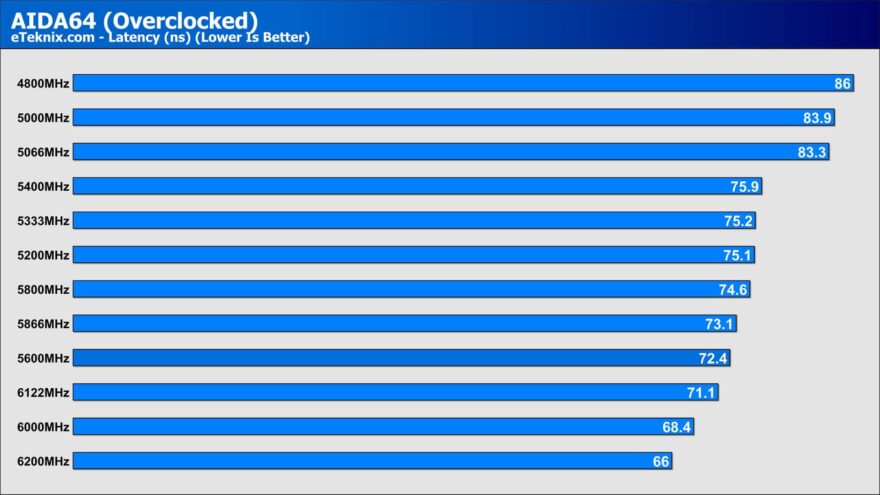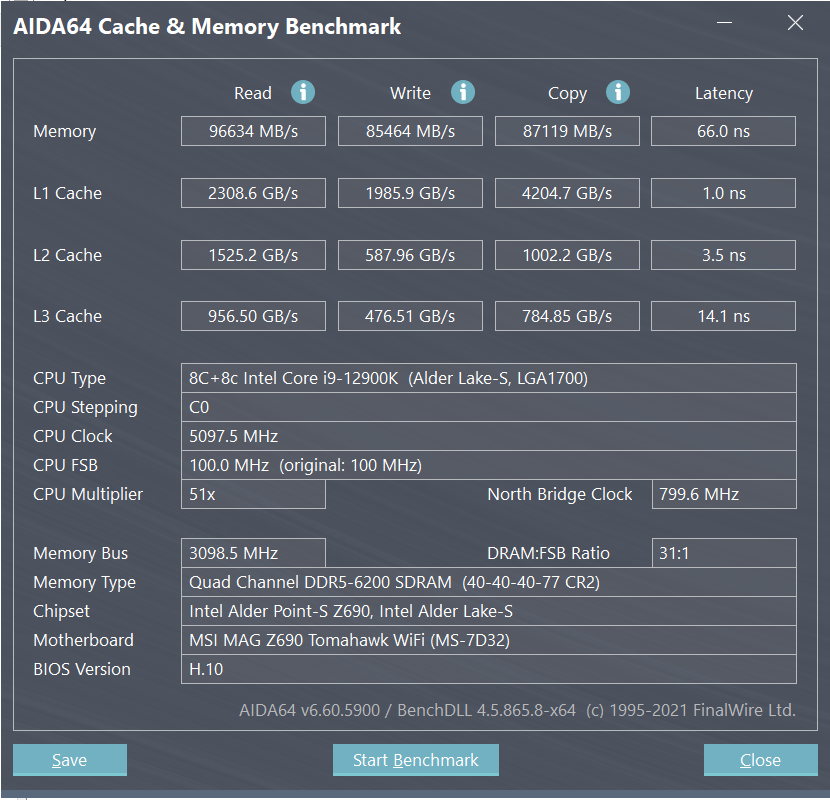Sabrent Rocket DDR5 32GB 4800MHz Memory Review
Andy Ruffell / 2 years ago
Overclocking
When overclocking memory, it can be done in a variety of ways including increasing the frequency, slackening timings and changing the relevant voltages. Of course, a combination of these measures can also be done to get the very best performance. When we overclock memory in our reviews we go for all out frequency. This is primarily done by tweaking the DRAM frequency within the BIOS. To do this, we take the default clock speed, which we set based on the JEDEC profile, or via XMP if the memory modules allow it, and then increase the DRAM frequency step by step while keeping timings and voltages the same as per the JEDEC or XMP profile. Once we increase the frequency, we boot into Windows and test stability using AIDA64’s built-in memory benchmark test. If the overclock is stable, we boot back into the BIOS and further increase the frequency of the modules and re-test for stability.
Now, while we are sometimes able to boot at a certain frequency, unless we see it as 100% stable, then it’s not good enough for us, and that’s where we ended up settling at a whopping 6200MHz. We did actually manage to boot at 6400MHz, and test using Aida 64 to see how memory throughput was affected, but other tests showed some instability and the system rebooted. If you really wanted to tweak things further, again, you could boost the voltage, or slacken the timings, but for us, an increase of 1400MHz overall, was more than enough, but how does this compare to its stock performance and that’s where my favourite saying comes in. Was the juice worth the squeeze?

Well straight away, it’s clear to see that in our read test, that’s definitely the case with an amazing 29.9% uplift in performance. and copy speeds the same with a 27% performance increase.

Write speeds saw a similar performance boost by around 24% when comparing stock performance and the increase to 6200MHz.

Copy speeds were also the same with a 27% performance increase uplift. Not bad for free gains, is it?

In terms of latency, this was also decreased from 86 nanoseconds to 66, putting it at the same as the 6200MHz Viper Gaming Venom kit that we tested again.




















